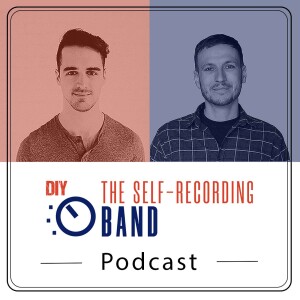
- Podcast Features
-
Monetization
-
Ads Marketplace
Join Ads Marketplace to earn through podcast sponsorships.
-
PodAds
Manage your ads with dynamic ad insertion capability.
-
Apple Podcasts Subscriptions Integration
Monetize with Apple Podcasts Subscriptions via Podbean.
-
Live Streaming
Earn rewards and recurring income from Fan Club membership.
-
Ads Marketplace
- Podbean App
-
Help and Support
-
Help Center
Get the answers and support you need.
-
Podbean Academy
Resources and guides to launch, grow, and monetize podcast.
-
Podbean Blog
Stay updated with the latest podcasting tips and trends.
-
What’s New
Check out our newest and recently released features!
-
Podcasting Smarter
Podcast interviews, best practices, and helpful tips.
-
Help Center
-
Popular Topics
-
How to Start a Podcast
The step-by-step guide to start your own podcast.
-
How to Start a Live Podcast
Create the best live podcast and engage your audience.
-
How to Monetize a Podcast
Tips on making the decision to monetize your podcast.
-
How to Promote Your Podcast
The best ways to get more eyes and ears on your podcast.
-
Podcast Advertising 101
Everything you need to know about podcast advertising.
-
Mobile Podcast Recording Guide
The ultimate guide to recording a podcast on your phone.
-
How to Use Group Recording
Steps to set up and use group recording in the Podbean app.
-
How to Start a Podcast
-
Podcasting
- Podcast Features
-
Monetization
-
Ads Marketplace
Join Ads Marketplace to earn through podcast sponsorships.
-
PodAds
Manage your ads with dynamic ad insertion capability.
-
Apple Podcasts Subscriptions Integration
Monetize with Apple Podcasts Subscriptions via Podbean.
-
Live Streaming
Earn rewards and recurring income from Fan Club membership.
-
Ads Marketplace
- Podbean App
- Advertisers
- Enterprise
- Pricing
-
Resources
-
Help and Support
-
Help Center
Get the answers and support you need.
-
Podbean Academy
Resources and guides to launch, grow, and monetize podcast.
-
Podbean Blog
Stay updated with the latest podcasting tips and trends.
-
What’s New
Check out our newest and recently released features!
-
Podcasting Smarter
Podcast interviews, best practices, and helpful tips.
-
Help Center
-
Popular Topics
-
How to Start a Podcast
The step-by-step guide to start your own podcast.
-
How to Start a Live Podcast
Create the best live podcast and engage your audience.
-
How to Monetize a Podcast
Tips on making the decision to monetize your podcast.
-
How to Promote Your Podcast
The best ways to get more eyes and ears on your podcast.
-
Podcast Advertising 101
Everything you need to know about podcast advertising.
-
Mobile Podcast Recording Guide
The ultimate guide to recording a podcast on your phone.
-
How to Use Group Recording
Steps to set up and use group recording in the Podbean app.
-
How to Start a Podcast
-
Help and Support
- Discover

#155: Understanding Loudness In Mastering (LUFS, RMS And How Loud It Actually Needs To Be)
Send us a text
Here are three next steps for you to take:
1. Get our free video training & checklist, "Standout Mixes - The DIY Musician's Guide To Exciting Mixes That Stand Out And Connect":
theselfrecordingband.com/standoutmixes
-
2. Apply for The Self-Recording Syndicate, our personalized coaching program!
It all starts with a free first call where we talk about your music, give you feedback and a step-by-step action plan that you can then implement on your own, or together with us.
Best case: We end up working together and completely transform the sound of your music forever.
Worst case: You get an hour of free coaching and feedback.
Sounds fair? Cool. Apply now and book your free coaching call:
theselfrecordingband.com/call
-
3. Join the free Facebook Group ("The Self-Recording Band Community"):
theselfrecordingband.com/community
--
Episode show notes:
How loud does my music need to be and how do we measure it in 2023?
We got a very interesting question on Instagram.
An experienced engineer who does great work but took a relatively long break from music production was wondering about how we measure loudness today, whether RMS was still relevant now that we have LUFS, and whether we can still master as loud as we did years ago, without negative consequences when our songs are played next to others on streaming platforms.
And he's definitely not alone. Many people seem to be confused about different ways of measuring loudness and also the always changing trends and opinions on the topic.
To answer the question directly, we also explain the difference between RMS and LUFS:
RMS:
“Root mean square”. The average level of your audio signal, measured over a longer period of time, and close to what your ears perceive as the loudness of your audio.
LUFS:
“Loudness units relative to Full Scale”. This is a loudness standard designed to enable the matching of perceived audio levels. So that different signals (or songs) will sound equally loud, no matter what the dB meter says.
Loudness Units (or LU) is a unit that describes loudness by taking into account how our hearing perceives volume. Not just pure sound pressure or amplitude, like “dB” does.
And again, “FS” means “relative to full scale”. So, for example, -18 LUFS means “18 LU away from the maximum of 0”. The difference between -23 LUFS and -18 LUFS, for example is 5 LU.
Then we're sharing how we do it in our own projects:
- How loud do we master and why?
- How do we measure it?
- How important is it to us?
And one final word of caution:
Be careful about different RMS settings on your meters! AES-17 on/off makes a 3dB difference. One RMS value doesn't necessary equal another RMS value.
Be careful when comparing anything, basically. There's many different ways to measure loudness and volume and it's easy to get confused and compare different things without noticing.
More details on that in the episode.
Let's go!
-Benedikt
--
For full show notes go to: https://theselfrecordingband.com/155
If you have any questions, feedback, topic ideas or want to suggest a guest, email us at: podcast@theselfrecordingband.com
More Episodes
 2022-08-17
2022-08-17
 2022-07-06
2022-07-06
 2022-06-01
2022-06-01
 2022-05-11
2022-05-11
Create your
podcast in
minutes
- Full-featured podcast site
- Unlimited storage and bandwidth
- Comprehensive podcast stats
- Distribute to Apple Podcasts, Spotify, and more
- Make money with your podcast
It is Free
- Privacy Policy
- Cookie Policy
- Terms of Use
- Consent Preferences
- Copyright © 2015-2025 Podbean.com




